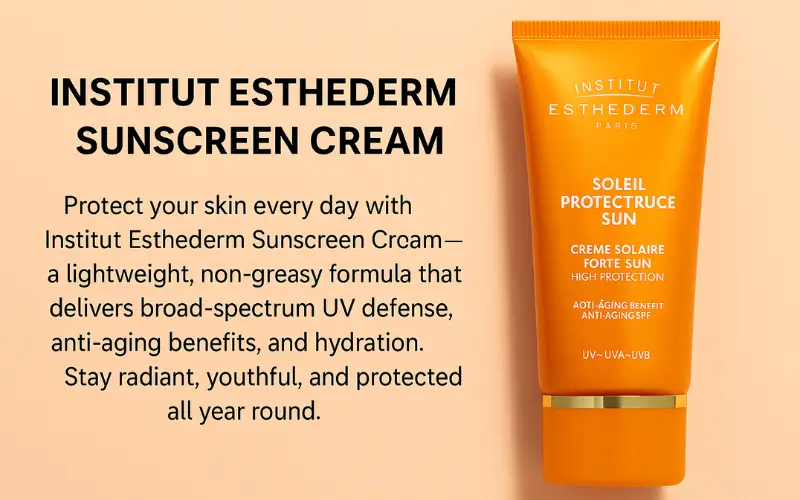In today’s world, we are bombarded with countless skincare products, each claiming to be the miracle cure for all our skin woes. But what truly sets these products apart are the active ingredients. Understanding these elements is key to making informed decisions about your skincare regimen.
This post will guide you through the essentials of active skincare ingredients, their role, and how to choose the best ones for your needs.
Unravelling the Mystery of Active Ingredients in Skincare
Active ingredients are the superheroes of skincare products. They are the components designed to address specific skin concerns—whether it’s battling acne, reducing wrinkles, or brightening your complexion. These ingredients are scientifically proven to bring about significant changes in the skin, which makes them indispensable in any skincare routine.
For skincare enthusiasts, beauty bloggers, and health-conscious consumers, knowing the ins and outs of active ingredients can be both empowering and enlightening. With the right knowledge, you can tailor your skincare routine to achieve the best possible results for your unique skin type and concerns.
The Crucial Role of Active Ingredients in Skincare Products
Active ingredients work at the core of skincare solutions. They are responsible for delivering the promised benefits that are often advertised on product labels. When formulated correctly, they penetrate the skin’s surface, interacting with cells to bring about desired changes like increased hydration or reduced inflammation.
For instance, retinal is known for its anti-ageing properties. It stimulates collagen production, reducing the appearance of fine lines and wrinkles. Vitamin C, on the other hand, is celebrated for its ability to brighten the skin by inhibiting melanin production, leading to an even skin tone.
While active ingredients are powerful, their effectiveness hinges on the overall formulation of the product. It’s not just about having these ingredients; it’s about how they’re combined and delivered to the skin. For instance, brands like Incellderm leverage advanced technologies to ensure optimal absorption and efficacy of their natural ingredients. This underscores the importance of choosing high-quality skincare products that are supported by clinical evidence.
Common Active Ingredients and Their Benefits
Retinoids for Anti-Ageing
Retinoids are derivatives of vitamin A and are revered in the skincare community for their potent anti-ageing benefits. They accelerate cell turnover, which helps fade age spots and smoothens fine lines. Regular use of retinoids can dramatically improve skin texture and restore a youthful glow.
However, it’s important to integrate retinoids into your routine gradually, as they can sometimes cause irritation, particularly for those with sensitive skin. Start with a low concentration and increase as your skin builds tolerance. Additionally, using retinoids calls for diligent sun protection, as they can increase your skin’s sensitivity to UV rays.
Hyaluronic Acid for Hydration
Hyaluronic acid is a naturally occurring molecule in our skin, known for its unparalleled ability to retain moisture. It acts like a sponge, drawing water from the environment into the skin, making it an exceptional hydrator. This ingredient is beneficial for all skin types, especially for those with dry or ageing skin.
The beauty of hyaluronic acid lies in its versatility. It can be found in serums, creams, and even sheet masks, offering a multitude of ways to incorporate it into your skincare regimen. For optimal results, apply it on damp skin and follow up with a moisturiser to seal in the hydration.
Vitamin C for Brightening
Vitamin C is a powerhouse antioxidant that protects the skin from environmental stressors like UV radiation and pollution. It also plays a crucial role in collagen synthesis, which helps maintain the skin’s firmness and elasticity. Beyond protection, vitamin C is famed for its brightening effects, giving the complexion a radiant boost.
A good vitamin C serum can transform dull, tired skin into a luminous, youthful visage. To maximise its benefits, incorporate vitamin C products in the morning skincare routine, following it with SPF to shield against potential sun damage.
Salicylic Acid for Acne Treatment
Salicylic acid is a beta hydroxy acid (BHA) renowned for its ability to combat acne. It works by penetrating deep into the pores, dissolving excess sebum and dead skin cells that lead to breakouts. This ingredient is ideal for those with oily or acne-prone skin, as it helps to maintain clear, blemish-free skin.
For effective acne treatment, look for serums, cleansers, or spot treatments with salicylic acid. Regular use can also help reduce pore size and prevent future breakouts, making it a staple for many facing persistent acne issues.
Choosing Skincare Products Based on Active Ingredients
Selecting the right skincare products is pivotal for achieving your desired skin goals. Begin by identifying your primary skin concerns, whether it’s dryness, pigmentation, or acne. Once you’ve pinpointed these, look for products featuring active ingredients that target those specific issues.
It’s essential to understand your skin type. For sensitive skin, opt for gentle actives like niacinamide or ceramides. Oily or acne-prone skin can benefit from salicylic acid and retinoids, whereas hyaluronic acid and peptides work wonders for dry skin types.
Don’t shy away from experimenting to discover what combinations yield the best results for you. Skin is as unique as fingerprints, and finding the right mix of actives is a personal journey that can take time, patience, and consistency.
Common Misconceptions and Myths About Active Ingredients
Despite their benefits, active ingredients are shrouded in myths. One prevalent misconception is that more is always better. In reality, overusing actives can lead to skin irritation, dryness, or even damage. The key is to use them in moderation and as directed.
Another myth is that all active ingredients work well together. Mixing certain actives, such as retinoids and acids, can be harsh on the skin and diminish their efficacy. It’s crucial to understand which combinations are complementary and which should be avoided.
Lastly, some believe that natural ingredients are always safer than synthetic ones. However, the efficacy and safety of an ingredient depend on its formulation, not its origin. Educating yourself about these myths can guide you in making better skincare choices.
Understanding Labels: What to Look for and What to Avoid
Deciphering skincare labels can be overwhelming, but it’s a skill worth mastering. Start by scanning the ingredient list; active ingredients are typically listed towards the top. Keep an eye out for terms like “fragrance-free” and “non-comedogenic,” as they indicate products less likely to irritate or clog pores.
Be wary of potentially harmful additives such as parabens, sulfates, and artificial fragrances. While not all are harmful, some individuals may find their skin reacts negatively. Conducting a patch test before fully incorporating a new product is a prudent step in safeguarding your skin.
Additionally, pay attention to expiration dates. Active ingredients, especially those in serums and sunscreens, can become less effective over time. Ensure your products are stored properly and replaced regularly to maintain their potency.
FAQs About Active Ingredients in Skincare
How do I know if a skincare product contains active ingredients?
Active ingredients are typically listed on the product label. They are usually highlighted in the product description or front label due to their importance. If unsure, consult the ingredient list and look for names like retinol, hyaluronic acid, or vitamin C.
Are all active ingredients safe for all skin types?
Not all active ingredients are suitable for every skin type. For instance, sensitive skin may react adversely to strong acids, while oilier skin might benefit from them. Always patch-test new products and consult with a dermatologist if you have concerns.
Can I use multiple active ingredients together?
Some active ingredients can complement each other, like hyaluronic acid with vitamin C. However, others, like retinoids and benzoyl peroxide, may be too harsh when combined. It’s best to introduce new actives gradually and observe how your skin responds.
Looking Ahead to the Future of Active Ingredients in Skincare
The skincare industry is ever-evolving, with scientific advancements promising even more efficient and targeted active ingredients. The future holds exciting developments, such as personalised skincare powered by AI and biotechnology, offering bespoke solutions tailored to individual skin needs.
For skincare enthusiasts and health-conscious consumers, staying informed about these innovations can empower you to make proactive choices that benefit your skin. By understanding and leveraging the power of active ingredients, you can achieve a complexion that’s not only healthy but also radiant and resilient.
In conclusion, the world of active ingredients is vast and full of potential. By arming yourself with knowledge and approaching skincare with curiosity and care, you can unlock the secrets to achieving your best skin yet.




